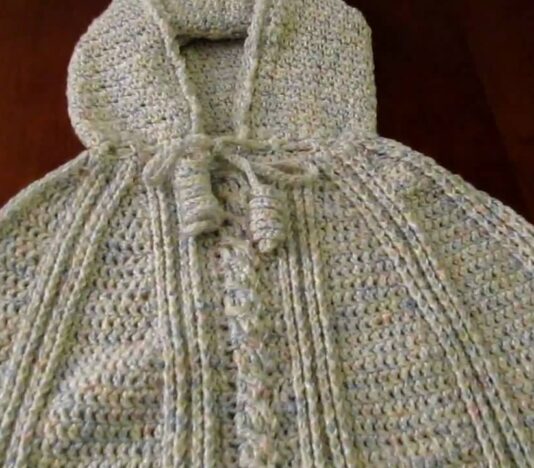A Hooded Poncho is a versatile garment that is worn as a coat, raincoat, blanket or even a scarf. It is designed to cover the entire body, including the face and shoulders. Typically, they are made from wool or cotton and have a hood.
Hooded ponchos are usually worn to protect against wind, rain and cold. They’re great to wear during overcast days, outdoor hikes, and even commuting to and from work. Many are also decorated with embroidery or “tribal” style details, giving them a unique and stylish look.
Hooded Poncho | What is your importance
The Hooded Poncho is a versatile and useful piece for the autumn-winter season. This piece works as an alternative to the coat and can sometimes be used as a raincoat. It is made of soft and lightweight material, allowing users to stay warm and comfortable.
Hooded ponchos vary in styles, sizes, and constructions. Most come in neutrals and dark tones, making it a versatile piece that can suit different occasions.
Some hooded ponchos also come with embroidered or patchwork details that make the piece unique. It is a piece that can be worn both formally and casually. The Hooded Poncho is a must-have for any winter wardrobe. It’s warm, practical and versatile, making it a standout piece in winter fashion for women of all ages.
Hooded Poncho | Benefits and advantages of doing
Hooded Ponchos are modernized versions of an ancient type of covering traditionally used as the outer layer of clothing. These ponchos offer many advantages and benefits that make their use desirable for those looking for a versatile and good-looking solution.
• Style: One of the main advantages of a hooded poncho is its unique style. These items become a favorite piece for everyday wear, and for special occasions. The poncho goes well with a variety of looks, and offers an added level of elegance.
• Versatility: Because hooded ponchos can be easily folded or rolled up, they take up very little space in your purse or suitcase. This means that they can be used both on a day-to-day basis and when we are getting ready to go out.
• Convenience: A hooded poncho is easy to put on – basically layered over your outfit. It’s faster and simpler than having to choose another layer, like a jacket for example. Also, hooded ponchos are generally warmer than blouses and dresses, and don’t need to be adjusted to fit properly.
• Protection: In addition to providing added warmth and style, hooded ponchos also serve as an effective way to protect yourself from rain and snow. The hood helps protect your head and shoulders from wind and cold, and the material is designed to resist moisture.
• Practicality: Hooded ponchos are also easier to clean than jackets, as they are generally lighter and made from thinner fabrics.
Hooded Poncho | step by step to do
1. Gather the materials you will need: fabric for the cover, scraps of fabric for the cover, needle, thread, pins, measuring tape and buttons.
2. Trace the cover onto the sheet of paper. Take the opportunity to leave the correct measurements.
3. Cut the fabric following the measurements you marked.
4. Sew the fabric using the fabric scrap.
5. Left half done, roll up the fabric to form the hood.
6. Sew the hood to the main fabric, and add a few buttons to close it.
7. Sew the sides to complete the poncho.
8. Finish the edges with a stitch.
9. And that’s it! Now you have a nice, warm poncho to wear.
Final Thoughts on the Hooded Poncho
The Hooded Poncho is a very versatile and practical product, which offers great protection against the rain and keeps the user warm, in addition to its modern design.
Its lightweight construction is perfect for active users as it greatly facilitates air circulation, while the protective shell keeps the user safe and warm.
Variable prices make the Hooded Poncho affordable for everyone, and maintenance is slightly simpler. Compared to other waterproof products, the Poncho offers excellent value for money for any wearer who lives in a rainy area or wants to enjoy an outdoor walk on changeable days.

Leave a Reply